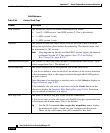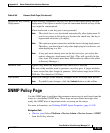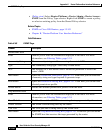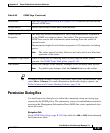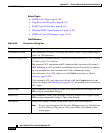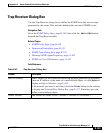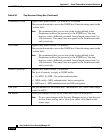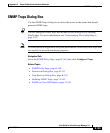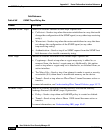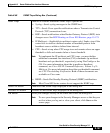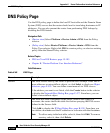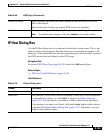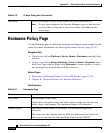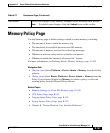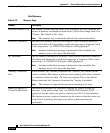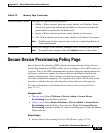
Appendix K Router Platform User Interface Reference
SNMP Policy Page
K-156
User Guide for Cisco Security Manager 3.2
OL-16066-01
Field Reference
Table K-68 SNMP Traps Dialog Box
Element Description
Standard SNMP Traps Enables or disables standard SNMP traps. Options are:
• Cold start—Sends a trap when the router reinitializes in a way that could
change the configuration of the SNMP agent (or any other trap-receiving
entity).
• Warm start—Sends a trap when the router reinitializes in a way that does
not change the configuration of the SNMP agent (or any other
trap-receiving entity).
• Authentication—Sends a trap if an SNMP request from the SNMP host
fails because of an invalid community string.
IPsec Traps Enables or disables individual IPsec-related traps. Options are:
• Cryptomap—Sends a trap when a crypto map entry is added to, or
removed from, the device’s crypto map set. Additionally, this option
sends a trap when a crypto map set is attached to, or detached from, an
active interface.
• Too Many SAs—Sends a trap if an attempt is made to create a security
association (SA) when there is insufficient memory on the device.
• Tunnel—Sends a trap when an IPsec Phase 2 tunnel becomes active or
inactive.
For more information, see Understanding IPsec Tunnel Policies, page 10-72.
ISAKMP Traps Enables or disables individual Internet Security Association and Key
Exchange Protocol (ISAKMP) traps. Options are:
• Policy—Sends a trap when an ISAKMP policy is created or deleted.
• Tunnel—Sends a trap when a Phase 1 IKE tunnel becomes active or
inactive.
For more information, see Understanding IKE, page 10-67.



